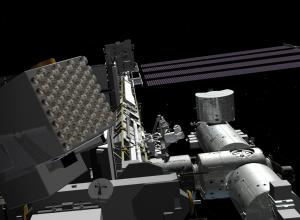NICER [1]
It’s been half a century since astronomers discovered the first neutron star. During the intervening decades, they’ve pieced together the story of what neutron stars are and how they form. But some of the details are still unclear.
A space telescope that’s scheduled for launch to the International Space Station as early as next month should eliminate some of the mystery. In particular, it’ll reveal the sizes of neutron stars more precisely than ever before. That will help astronomers eliminate some models of how neutron stars are put together.
A neutron star is the crushed core of a star that was many times the mass of the Sun. When the core of such a star can no longer produce nuclear reactions, it collapses. That creates a ball that’s perhaps two or three times the mass of the Sun, but only about a dozen miles across. That makes it billions of times denser than normal matter.
NICER — the Neutron Star Interior Composition Explorer — will take a look at many known neutron stars, and discover many more. Its 56 X-ray detectors will measure how quickly the X-ray light from neutron stars changes, as well as the intensity of light across the X-ray spectrum.
Among other things, those readings will tell astronomers precisely how big the neutron stars are. That, in turn, will reveal precisely how dense they are. And that will tell astronomers much more about how these stellar corpses are put together.
We’ll talk about the birth of a neutron star tomorrow.
Script by Damond Benningfield


